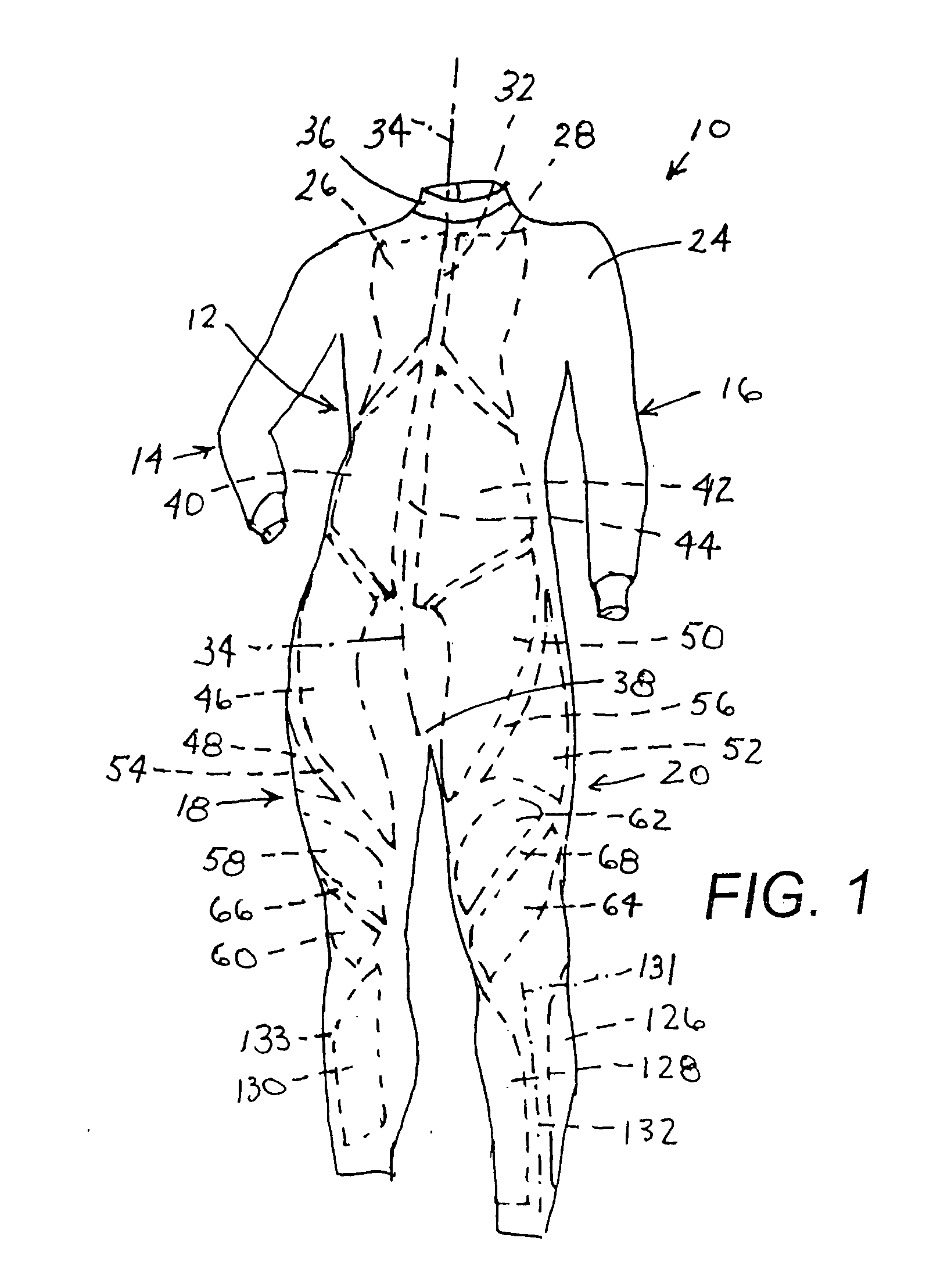Wetsuit and associated method of manufacture
a technology of wetsuits and manufacturing methods, applied in the field of wetsuits, can solve problems such as internal stresses and unsatisfactory stiffness, and achieve the effects of reducing drag, improving performance characteristics, and reducing constricting pressure on lung expansion
- Summary
- Abstract
- Description
- Claims
- Application Information
AI Technical Summary
Benefits of technology
Problems solved by technology
Method used
Image
Examples
Embodiment Construction
[0025]As shown in FIGS. 1 and 2, a wetsuit 10 has a torso 12, arms 14 and 16 and legs 18 and 20. A zipper 22 extends along a posterior or back side of the torso 12, as shown in FIG. 2. Wetsuit 10 comprises a continuous, but not necessarily unitary, outer layer 24 extending over torso 12, arms 14 and 16 and legs 18 and 20. Outer layer 24 has a substantially uniform thickness of approximately 2 mm throughout torso 12, arms 14 and 16 and legs 18 and 20. Outer layer 24 is made of a water-resistant or -impervious material such as neoprene cut from sheets into patterns or panels 23 (FIG. 3) that are connected to each other along abutting edges by glue and by blind stitching along an inner surface 30 (FIG. 4) to form watertight seams 25, as shown in FIG. 3.
[0026]As depicted in FIG. 1, wetsuit 10 further comprises a pair of ancillary chest panels 26 and 28 attached to inner surface 30 of outer layer 24 on an anterior side (not separately designated) of torso 12. Chest panels 26 and 28 are s...
PUM
 Login to View More
Login to View More Abstract
Description
Claims
Application Information
 Login to View More
Login to View More - R&D
- Intellectual Property
- Life Sciences
- Materials
- Tech Scout
- Unparalleled Data Quality
- Higher Quality Content
- 60% Fewer Hallucinations
Browse by: Latest US Patents, China's latest patents, Technical Efficacy Thesaurus, Application Domain, Technology Topic, Popular Technical Reports.
© 2025 PatSnap. All rights reserved.Legal|Privacy policy|Modern Slavery Act Transparency Statement|Sitemap|About US| Contact US: help@patsnap.com



